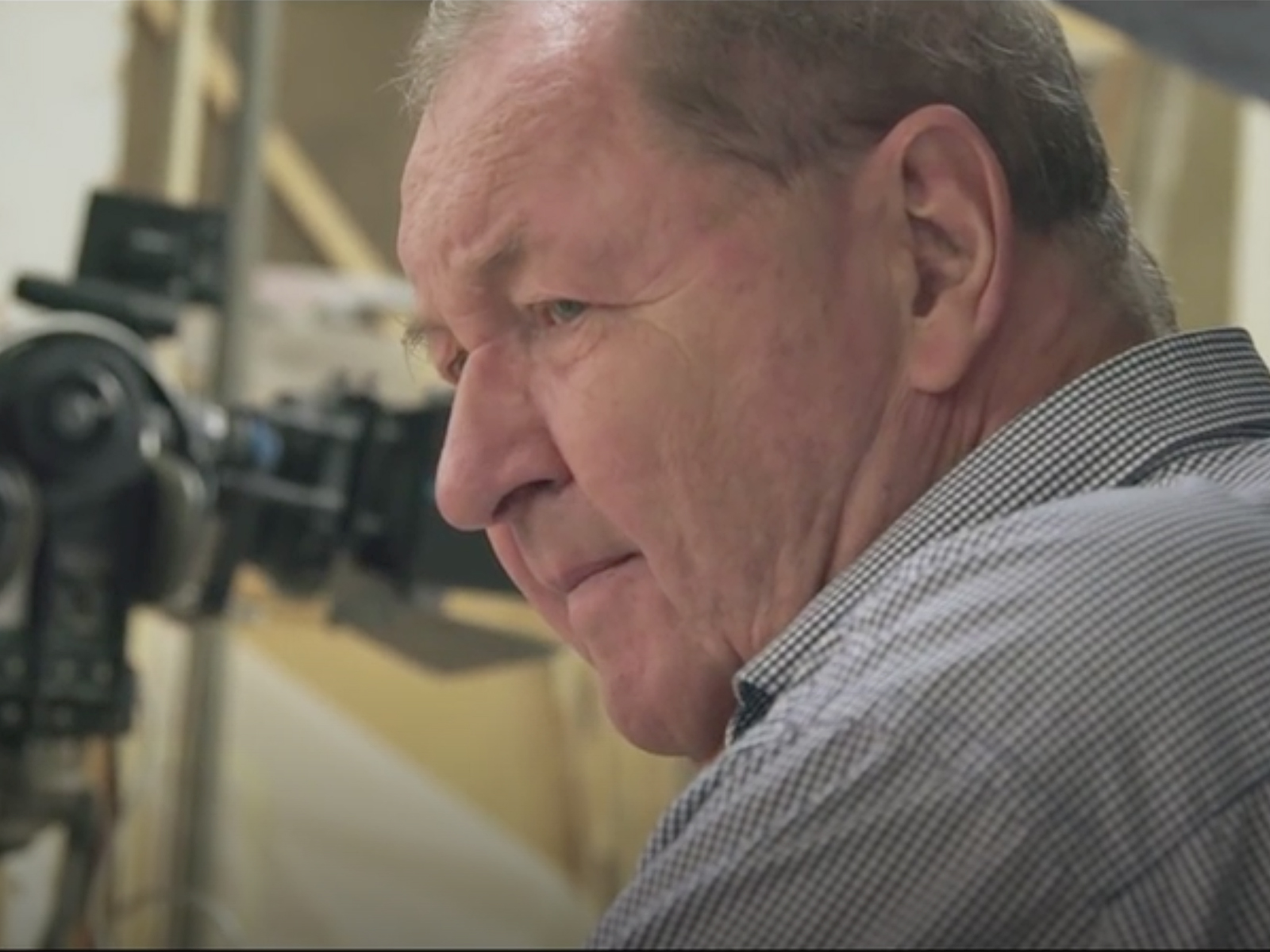
- Film
Docs: Being a Human Person (2020)
An engaging, candid documentary look at award-winning Swedish auteur Roy Andersson as told chiefly through the lens of his work on his self-proclaimed last film, Being a Human Person is a movie that gives ample consideration to its subject’s primary professional thematic preoccupations: vulnerability, insecurity, and the weight of mortality. It also serves to celebrate more broadly humanity’s inherent need for art, and its use as a salve for what burdens us. Largely warm and open-hearted, it nevertheless contains a slight ribbon of wistfulness, making for a viewing experience that aims to embrace the emotional complexity of the human experience.
A very methodical director (he’s only made a half-dozen features) with a portraitist’s affinity for people not much seen, Andersson has, over the last several decades, cultivated an idiosyncratic, highly personalized style honed at his sprawling work-live loft in downtown Stockholm. There his production team crafts, builds, converts and then destroys sprawling sets which conform to his exacting vision. Andersson’s latest cinematic undertaking, About Endlessness, is a strung-together series of 30-plus narrated vignettes, and a softer and somewhat darker work – bereft of the comedic touches of many of his other films, infused with the type of contemplativeness one might expect of a more mature filmmaker.
Directed by Fred Scott, Being a Human Person serves up a loving look at this process, which includes a lot of eye-tricking model work, as well as copious camera tests to explore different angles. Early on, some interesting parallels with David Lynch emerge in the form of not only Andersson’s work as a painter but his sense of humor and shared obsessions with electrical outlets and radiators.
Scott’s film is no mere elongated behind-the-scenes making-of DVD featurette, however. It’s a well-crafted film possessing its own areas of inquiry and through lines, which include Andersson grappling, after some gentle prodding by his producer and studio employees, with a stint in rehab to address an increasing reliance on alcohol. The intersection of this interruptive real-life plot point coincides with, and quite nicely complements, an examination of indulging the whims of a lead artist in a collaborative medium – the sacrifices and servitude that requires from other people, and the feelings of listlessness and despair that can develop when the chased feelings or “kick” of that individual either isn’t being found or pursued with rigor and a clearly articulated vision. Other portions of the movie, equally interesting if given a bit less time, probe Andersson’s fascination with the work of Francisco Goya, as well as self-analyzed proxy guilt over the horrors of World War II and specifically the Holocaust.
Being a Human Person flags a bit in its last third. But at 92 minutes it never risks overstaying its welcome, and its pacing tracks generally in a way that perhaps appropriately mimics the fading yet still potent energy of a lion in winter. As Andersson – winner of the Cannes Film Festival Jury Prize for 2000’s Songs from the Second Floor, and a Golden Lion from the Venice Film Festival for 2014’s A Pigeon Sat on a Branch Reflecting on Existence – returns to work on his production, Scott and editor Michael Aaglund subtly interweave more deeply ruminative and pointedly curated, referential looks back at Andersson’s filmography. The result, lovely and lived-in, speaks to its affable subject’s passionately held, lifelong exaltation of art as, as he describes it, “a little step away from total loneliness.”